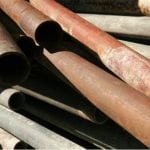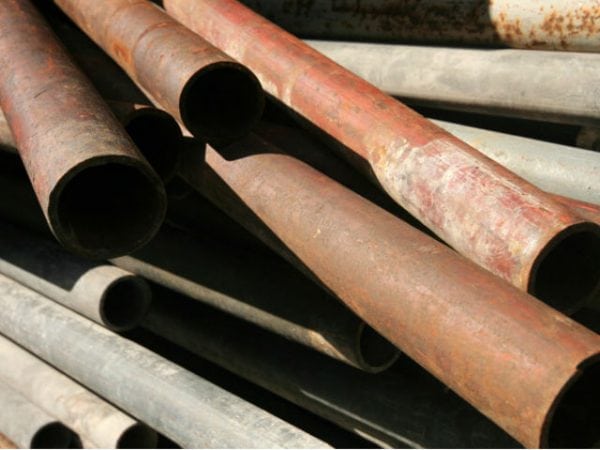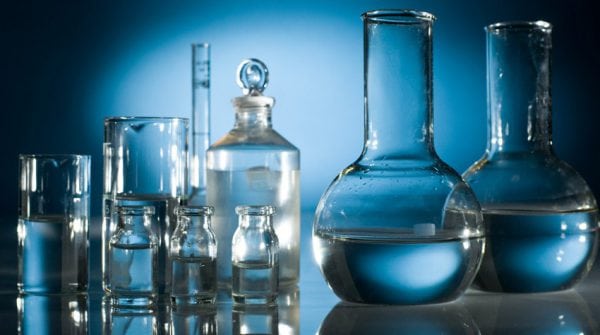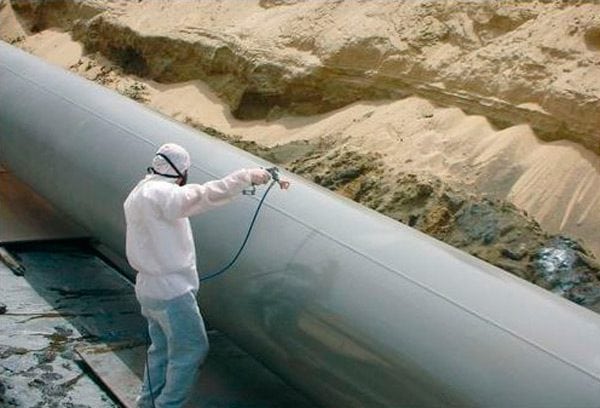Corrosion of pipelines is the main cause of depressurization, as a result of which cracks, gaps and cavities appear on the pipe surface. And therefore, the protection of pipelines from corrosion is a task not only for builders or manufacturers, but also for specialists creating projects and those who will use them.
- Causes of occurrence
- Types of protection
- Fluid treatment
- Wall treatment
- Stray current
- Induced current
- Consumable anode

The cause of rust and corrosion on steel tanks may be the improper composition of the fluid flowing through them, the incorrect combination of various metals, as well as insufficient corrosion control and poorly selected methods of protection. The danger of corrosion is that it can cause piping to leak. To repair the pipes, after damage can only be done by welding.
to contents ↑Causes of occurrence
Corrosion of steel underground pipes is a phenomenon, the main reason for which is the reaction of electrochemical oxidation of metals from their constant interaction with moisture. As a result of such reactions, the composition of the metal changes at the ionic level, becomes rusty, decays, and simply disappears from the surface.
The oxidation process may be affected by the nature of the fluid that flows through the underground heating pipe or the properties of the medium in which it is located. It is for this reason, when choosing suitable rust control agents, it is necessary to take into account all the features that preceded its occurrence. Otherwise, repair by welding is inevitable.
to contents ↑Types of protection
Today, there are several different methods for treating underground heating pipes from rust and corrosion. All of them are based on the principle of special processing, during which the metal from which the tanks are made reacts with the substances and solutions introduced. As a result of such actions, a special film is formed, which provides protection.
There are several main types of anti-corrosion protection methods:
- liquid treatment through chemical reagents;
- wall treatment;
- stray current;
- cathode;
- anode.
to contents ↑
Fluid treatment
The fluid that flows through the pipeline may have some aggressive qualities. The aggressive composition of water can result from the content of carbonates, bicarbonates or oxygen in it, which cause the metal to become rusty.
To perform high-quality cleaning of the walls of underground pipes or to clean them completely is quite difficult technically. The main objective of chemical treatment of water is the transformation of its composition from aggressive to low-calcium. Such treatment of underground heating pipes from rust often comes down to adding soda, calcium or sodium carbonate to the water.
In those sections of water supply in which water can be distributed at individual points of water intake, its further processing is carried out by adding polyphosphates.
Corrosion protection of galvanized underground tanks is carried out by adding silicates, phosphates and polycarbonates. Thus, a special film appears on the inner surface of galvanized pipes, which prevents corrosion.
Wall treatment
Wall treatment has been used as their protection against corrosion for many years. To perform this set of measures, the coating is applied to the external or internal wall of the underground pipe.
Thanks to electroplating, an active or passive film of high strength is formed on the surface, which does not allow an aggressive environment to penetrate into the deep layers of the metal. The effect of such actions can be easily saved for a sufficiently long period.
As a rule, another metal is applied to the surface of the product. Most often, zinc is used for this, which corrosion does not affect. Paint, varnish or enamel, which also act as effective processing of gas pipelines, can be applied to the metal surface.
To achieve maximum effect in the fight against rust, alloys of metals such as zinc or magnesium are often used. Experts say that galvanizing pipes is the most popular of all existing processing methods.
Stray current
Stray current is the current that is formed in the ground during dispersion of electrified paths. Energy enters the point that is the cathode, and exits at the point that is the anode.
During the process, electrolysis occurs, which can cause rust and damage to the tank. In this case, the anti-corrosion insulation of underground pipelines is drainage of an electrical nature.
to contents ↑Cables with low resistance are connected to a current source in specially defined places.
Induced current
The cathodic corrosion protection of underground tanks is based on the use of electric current, which is supplied in a constant mode and prevents the film from breaking down to protect the metal.
This method is performed by using a cable with low electrical resistance, but with excellent insulation. The pipeline itself in this case acts as a cathode and thus protects itself from possible corrosion processes.
to contents ↑Consumable anode
Another rather effective form of protection against stray currents is anode chemical protection. The recessed magnesium block acts as the anode in a corrosive environment. Due to the slow decomposition of magnesium, the isolation of main steel pipelines from underground stray currents occurs. This type of protection is most often used to protect products of limited length or for tanks that are made of steel.
Typically, the anode is placed in a bag of cotton or jute, which in turn is immersed in a clay mixture. The main objective of such packaging is to ensure uniform flow rate of the anode, as well as maintaining the required level of humidity.
Such a system will prevent the formation of a film, which may impede the decomposition of the anode.
It can be noted that the best way to protect the inner and outer surfaces of pipes from the occurrence of corrosion processes is to use materials that are least affected by them. And, nevertheless, even on such materials, for certain reasons, foci of corrosion and damage of various kinds can occur. And therefore, it is best to use one of the most suitable protection methods currently used in the process of using pipes using pipes.






